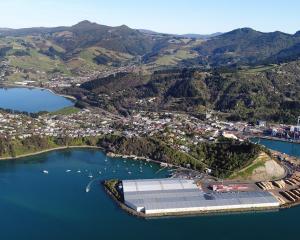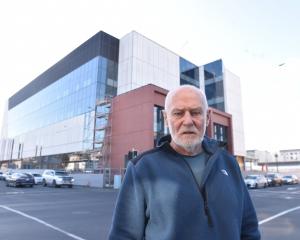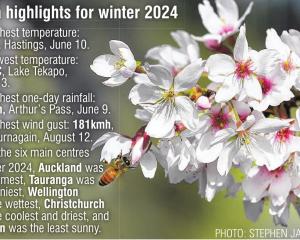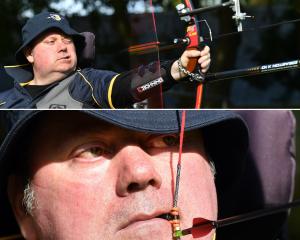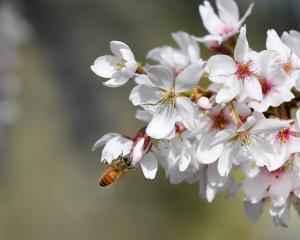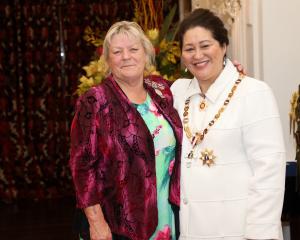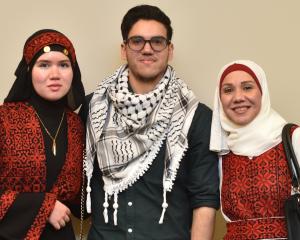Plants have been embedded, or fused into fabric.
Gnarled wood has been repurposed into often playful sculptures.
The work is the product of two artists with an obvious synergy — Dutch-born and Australian-bred Hendrik Koch and his Dunedin-born and bred daughter Kirsten Koch.
Their joint show "Botanically Speaking" runs at the gallery until Wednesday next week.
Hendrik said he worked from his home at Hoopers Inlet, on the Otago Peninsula, on a property he had re-forested over the last 42 years.
It was now a substantial forest, with trees 15m to 20m tall in some places.
He found wood or had friends and acquaintances who knew his work drop pieces off, and from there he would "cogitate a lot, look at it".
Then he used chainsaws, chisels, or sandpaper to "see what I can do to express the natural character of the wood".
His most recent work, Co2operation, started with a 4m-long, "beautifully straight", but forked piece of lancewood, or horoeka.
He carved two arms, and used the lancewood as a spear, piercing two "carbon dioxide molecules" to reference the role forests had in combating carbon emissions.
"I’m playing with words, I’m also playing with ideas — almost like a comic book approach of dealing with the issue."
Kirsten, a textile artist, was exhibiting wall hangings, clothing and bedding.
Some pieces were steamed, but more recently she began experimenting with what is known as the "dirty pot method", a form of botanical printing on to fabric, using the least amount of metal dye fixatives as possible.
She said the name of the show might evoke the phrase "philosophically speaking".
"But it comes from a place of a philosophy of botany, or plants.
"It’s like speaking from a plant’s perspective."
For both artists their work began with "the essence or the energy" of the plants they chose to work with, she said.
"We are so inspired by them."
But rather than manipulating the plants and bending them to their will, as artists, they let the plants speak for themselves.
"My daughter is very passionate about tapping into the knowledge that is embedded in all these plants in a very raw and essential way, and so am I," Hendrik said.
"We have got this sense that the botanical world around us, they’re characters, they’re beings as much as we are — and we’re trying to give voice to that."


